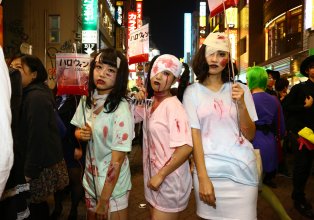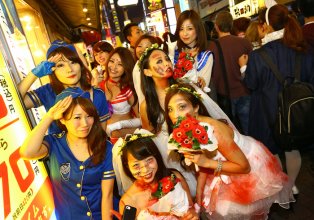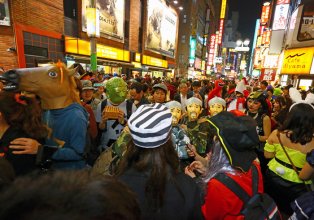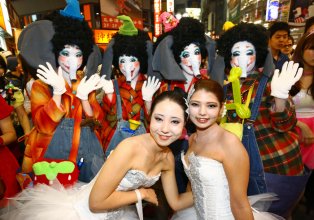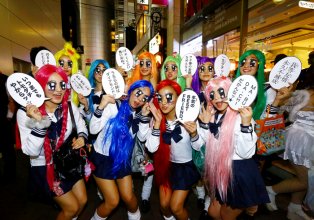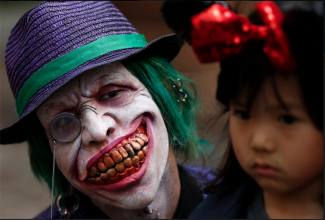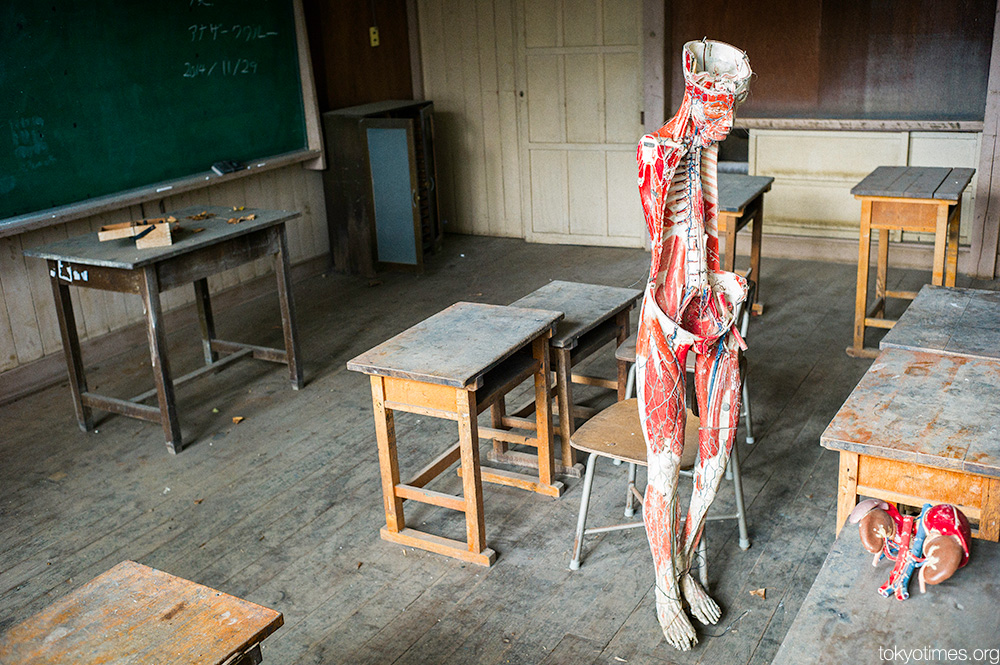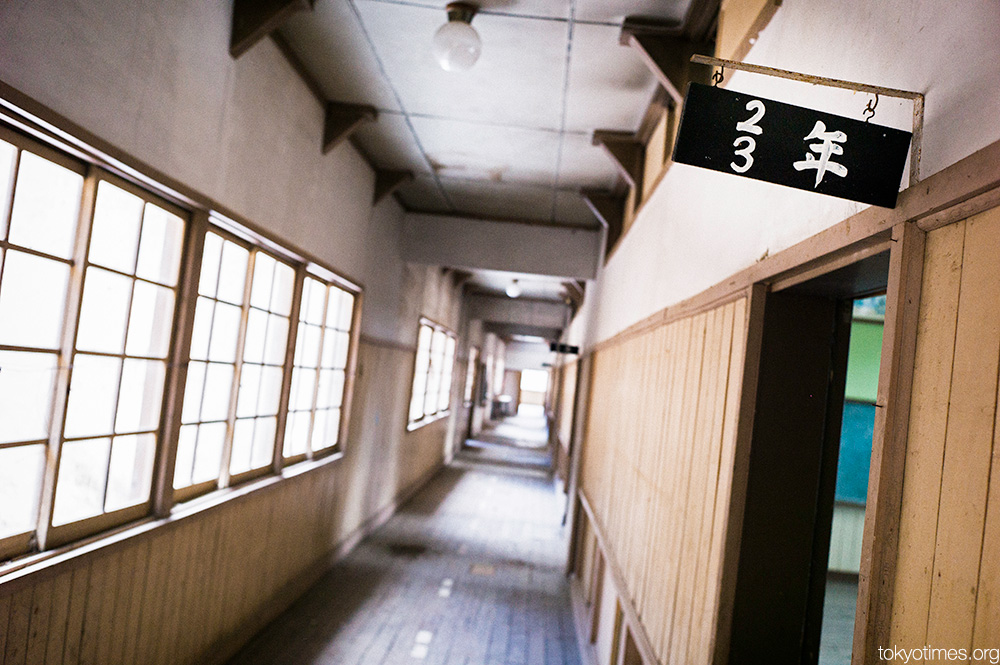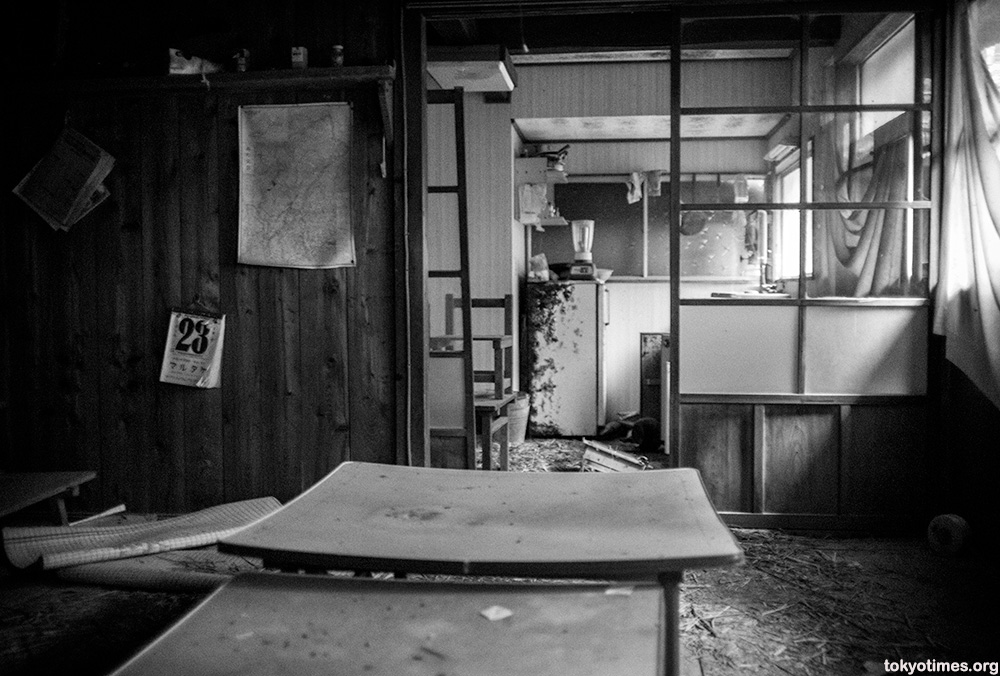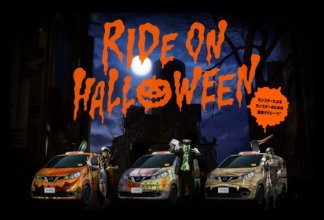Eat your eyeballs! Japanese traditional confectioner offers line of eye-grabbing Halloween sweets
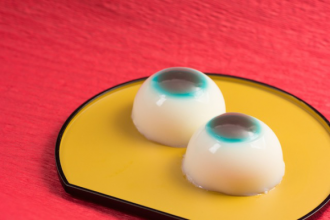
With Japan’s growing love of Halloween, and it’s long-held affection for seasonal sweets, the country now gets a bumper crop of special desserts for the year’s spookiest holiday. So far, most of these have been Japanese brands of Western-style candies and cookies with a Halloween-themed package, or maybe with a limited-time pumpkin flavor, but one traditional Kawasaki-based confectionary chain is looking to change that with a lineup of edible eyeballs, zombie fingers, and other Japanese sweets that look bone-chilling and sound mouth-watering.
It’s fitting that Suehiroan’s original branch is in Kawasaki. While it’s only in the last few years that Halloween has really started to catch on in Japan, Kawasaki has been holding Halloween costume parades and other events for roughly a decade and a half now. As a matter of fact, the local festivities have gotten so big that even Suehiroan, which has been serving elegant classical Japanese confectionaries since its founding in 1964, has gotten in on the fun with some playful new creations.
The most eye-catching of the bunch are these quivery suimanju dumplings, called Watching the Ghost Party (Obake no Party wo Mitsumeteru in Japanese). Made with smooth koshian sweet bean paste and milk from Hokkaido-raised cows, they come two to a pack for 292 yen (US$2.50) and are sure to please the taste buds of anyone with the stomach to try them.
Just about as disturbing are these shortbread cookies shaped like long fingers scratching their way out from a grave. Let’s Be Friends (Boku mo Nakama in Ireteokure) feature tasty zombie fingernails (which appear to be chipped peanuts). One 680-yen box contains 17 fingers, which makes us wonder what happened to the other three from a round set of four hands.
▼ Zombieism or leprosy…either way it’s deeelicious!
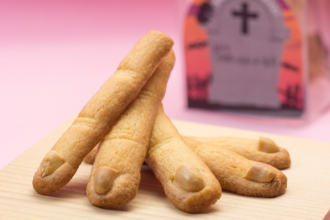
Of course, Japan can only go so long without adding a dash of cuteness to any proceedings, which is where the 270-yen Halloween is Coming (Halloween ga Hajimaru yo) comes in. The smiling little ghost is made from nerikiri, a traditional Japanese confectionary of white beans, rice flour, and sugar.
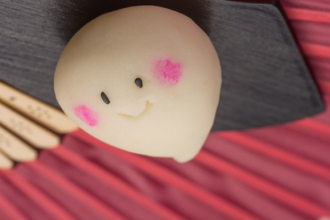
Most people who celebrate Halloween in Japan do so by having a party with friends. You’re sure to be appreciated at any gathering with the 864-yen Midnight Haunted House Party (Obake no Yakata de Mayonaka no Party), which plays into the Japanese belief that it’s customary to eat pumpkin-flavored sweets at Halloween with its pumpkin cream filling.
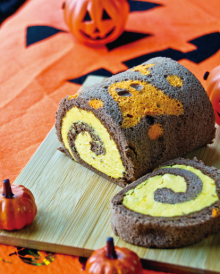
And finally, the name of the Playful Jack-o’-Lanterns (Jack-o’-Lantern ga Sawagidasu), which come five to a box for 394 yen, is a little misleading, seeing as how they lack the facial features that separate Jack-o’-Lanterns from ordinary pumpkins. They do have a dollop of pumpkin-flavored bean jam at the center of their bite-sized morsel of moist pie, though, and the questionable nomenclature shouldn’t hurt the taste any.
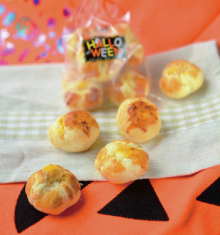
Customers who buy all five before October 25 can enter a drawing to win one of 30 special Halloween cakes Suehiroan will be whipping up.
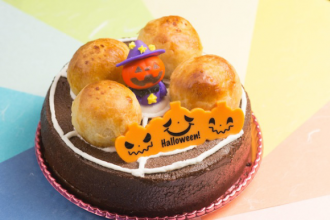
So don’t wait for October 31 and trick-or-treating, start gathering your Halloween sweets today! The entire range of sweets will be available at all seven Suehiro branches in Kawasaki and Yokohama, just a short train ride from central Tokyo.
Selected shop information (closest branch to central Tokyo)
Suehiroan Kawasaki La Zona branch / 末広庵 ラゾーナ店
Adress: Kanagawa-ken, Kawasaki-shi, Saiwai-ku, Horikawacho 72-1, La Zona Kawasaki Plaza 1st floor
神奈川県川崎市幸区堀川町72-1 ラゾーナ川崎プラザ1F

With Japan’s growing love of Halloween, and it’s long-held affection for seasonal sweets, the country now gets a bumper crop of special desserts for the year’s spookiest holiday. So far, most of these have been Japanese brands of Western-style candies and cookies with a Halloween-themed package, or maybe with a limited-time pumpkin flavor, but one traditional Kawasaki-based confectionary chain is looking to change that with a lineup of edible eyeballs, zombie fingers, and other Japanese sweets that look bone-chilling and sound mouth-watering.
It’s fitting that Suehiroan’s original branch is in Kawasaki. While it’s only in the last few years that Halloween has really started to catch on in Japan, Kawasaki has been holding Halloween costume parades and other events for roughly a decade and a half now. As a matter of fact, the local festivities have gotten so big that even Suehiroan, which has been serving elegant classical Japanese confectionaries since its founding in 1964, has gotten in on the fun with some playful new creations.
The most eye-catching of the bunch are these quivery suimanju dumplings, called Watching the Ghost Party (Obake no Party wo Mitsumeteru in Japanese). Made with smooth koshian sweet bean paste and milk from Hokkaido-raised cows, they come two to a pack for 292 yen (US$2.50) and are sure to please the taste buds of anyone with the stomach to try them.
Just about as disturbing are these shortbread cookies shaped like long fingers scratching their way out from a grave. Let’s Be Friends (Boku mo Nakama in Ireteokure) feature tasty zombie fingernails (which appear to be chipped peanuts). One 680-yen box contains 17 fingers, which makes us wonder what happened to the other three from a round set of four hands.
▼ Zombieism or leprosy…either way it’s deeelicious!

Of course, Japan can only go so long without adding a dash of cuteness to any proceedings, which is where the 270-yen Halloween is Coming (Halloween ga Hajimaru yo) comes in. The smiling little ghost is made from nerikiri, a traditional Japanese confectionary of white beans, rice flour, and sugar.

Most people who celebrate Halloween in Japan do so by having a party with friends. You’re sure to be appreciated at any gathering with the 864-yen Midnight Haunted House Party (Obake no Yakata de Mayonaka no Party), which plays into the Japanese belief that it’s customary to eat pumpkin-flavored sweets at Halloween with its pumpkin cream filling.

And finally, the name of the Playful Jack-o’-Lanterns (Jack-o’-Lantern ga Sawagidasu), which come five to a box for 394 yen, is a little misleading, seeing as how they lack the facial features that separate Jack-o’-Lanterns from ordinary pumpkins. They do have a dollop of pumpkin-flavored bean jam at the center of their bite-sized morsel of moist pie, though, and the questionable nomenclature shouldn’t hurt the taste any.

Customers who buy all five before October 25 can enter a drawing to win one of 30 special Halloween cakes Suehiroan will be whipping up.

So don’t wait for October 31 and trick-or-treating, start gathering your Halloween sweets today! The entire range of sweets will be available at all seven Suehiro branches in Kawasaki and Yokohama, just a short train ride from central Tokyo.
Selected shop information (closest branch to central Tokyo)
Suehiroan Kawasaki La Zona branch / 末広庵 ラゾーナ店
Adress: Kanagawa-ken, Kawasaki-shi, Saiwai-ku, Horikawacho 72-1, La Zona Kawasaki Plaza 1st floor
神奈川県川崎市幸区堀川町72-1 ラゾーナ川崎プラザ1F



